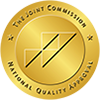Imagine taking a medication prescribed by your doctor, following the directions, yet unable to stop using it months later. This situation affects thousands of Americans each year who take Ambien (zolpidem), a widely prescribed sleep medication.
Emergency room visits related to zolpidem surged by nearly 220% from 2005 to 2010, with over 42,000 visits in one year. Although intended for short-term insomnia treatment, many patients use it for months or years beyond recommendations.
What’s troubling is that users can develop dependence while believing they are following medical advice. Ambien, prescribed legitimately, creates a false sense of security about its risks, delaying the recognition of issues and discouraging people from seeking help until dependence escalates.
At 12 South Recovery, we assist clients who began with legitimate prescriptions but faced difficulties controlling their Ambien use. Understanding the addictive potential of this medication can help you identify warning signs before dependence forms..

What Is Ambien and How Does It Work?
The Medical Purpose of Ambien
Ambien (zolpidem) belongs to a class of medications called sedative-hypnotics. Doctors prescribe it primarily for short-term treatment of insomnia characterized by difficulty falling asleep. Unlike some sleep medications, Ambien specifically targets sleep initiation rather than maintenance, helping people fall asleep faster but not necessarily stay asleep throughout the night.
The FDA has approved Ambien only for short-term use—typically 7-10 days and rarely longer than 2-4 weeks. This limited approval period reflects concerns about the medication’s effectiveness declining over time while risks of adverse effects and dependence increase with extended use.
Various formulations exist, including immediate-release tablets (Ambien), extended-release tablets (Ambien CR), sublingual tablets (Edluar), and oral spray (Zolpimist). Each delivers the same active ingredient but with different release patterns and durations of action.
How Ambien Affects the Brain
Ambien works by enhancing the effects of gamma-aminobutyric acid (GABA), a neurotransmitter that inhibits brain activity. By binding to GABA-A receptors, it slows down brain activity, allowing sleep to occur more easily. Unlike benzodiazepines that bind to multiple subtypes of GABA receptors, Ambien more selectively targets the alpha-1 subtype associated with sedation.
This selective action led many to initially believe Ambien would have lower addiction potential than benzodiazepines like Valium or Xanax. However, research has since revealed that Ambien affects reward pathways in the brain similar to other addictive substances, particularly at higher doses or with extended use.
The brain adapts quickly to Ambien’s presence through neurochemical adjustments that essentially counteract the drug’s effects—a process called tolerance. As tolerance develops, the brain becomes less responsive to the same dose, often leading users to increase their dosage to achieve the same sleep-inducing effect.
How Addiction to Ambien Develops
The Path from Medical Use to Dependence
Ambien dependence typically develops through a predictable progression:
Initial effectiveness creates positive associations as users experience relief from insomnia. The medication works quickly, often helping people fall asleep within 15-30 minutes, reinforcing its use through immediate benefits.
Tolerance begins developing within days to weeks of regular use. Users notice the medication doesn’t work as well as it once did, taking longer to induce sleep or producing less restful sleep than initially.
Dose escalation often follows as people attempt to recapture the original effectiveness. Some users might take a second dose during the night or increase their initial dose without medical supervision.
Psychological dependence emerges as users develop anxiety about sleeping without the medication. This “rebound insomnia” creates fear that sleep is impossible without Ambien, strengthening reliance on the drug.
Physical dependence develops as the brain adapts to Ambien’s constant presence, requiring the drug to maintain normal functioning. At this stage, stopping the medication produces uncomfortable withdrawal symptoms.
This progression can occur even in people with no history of substance abuse and no intention of misusing their medication. The subtlety of this development partly explains why many people don’t recognize their dependence until they attempt to stop taking Ambien.
Risk Factors for Ambien Addiction
Certain factors increase vulnerability to developing Ambien dependence:
History of other substance use disorders creates a heightened risk, as the neurological pathways involved in addiction may already be established.
Mental health conditions, particularly anxiety disorders or depression, significantly increase addiction vulnerability. Many people with insomnia also have these co-occurring conditions.
Age influences risk, with older adults generally more sensitive to Ambien’s effects and potentially more likely to experience adverse reactions or dependence.
Dosage and duration directly impact addiction risk. Higher doses and longer periods of use substantially increase the likelihood of dependence forming.
Previous trauma can contribute to addiction vulnerability through its effects on stress response systems and coping mechanisms.
Understanding these risk factors helps identify who might need extra precautions or closer monitoring when prescribed Ambien for sleep difficulties.
Signs and Symptoms of Ambien Addiction
Behavioral Warning Signs
Several behavioral changes may indicate developing Ambien dependence:
Doctor shopping occurs when users visit multiple physicians to obtain additional prescriptions beyond what a single doctor would provide.
Using Ambien during the daytime or taking higher doses than prescribed represents significant misuse that often indicates dependency has developed.
Spending excessive time obtaining, using, or recovering from Ambien effects suggests the medication has taken on inappropriate importance in someone’s life.
Continued use despite negative consequences, such as workplace issues, relationship problems, or health concerns, strongly suggests addiction rather than appropriate medical use.
Financial problems sometimes develop as people purchase Ambien illegally when prescriptions are no longer available or sufficient.
Physical and Psychological Symptoms
Physical manifestations of Ambien addiction often include:
Withdrawal symptoms when attempting to stop or reduce use, such as sweating, nausea, tremors, and severe rebound insomnia.
Memory problems, particularly blackout-like episodes where the person engages in activities (eating, driving, having conversations) without recall afterward.
Daytime drowsiness, coordination problems, or dizziness that persists despite getting adequate sleep.
Psychological indicators include:
Intense cravings for Ambien when not using it, including preoccupation with when the next dose can be taken.
Anxiety about sleeping without medication, often reaching phobic proportions, where bedtime becomes frightening without Ambien.
Failed attempts to cut down or control use despite a genuine desire to do so.
Recognizing these signs early allows for intervention before dependence becomes severe and more difficult to address.
The Dangers of Ambien Addiction
Physical Health Risks
Continued Ambien misuse creates numerous health hazards:
Increased risk of falls and accidents poses particular danger for older adults, with studies showing elevated fracture risk among elderly Ambien users.
Respiratory depression can occur at higher doses, especially when combined with other central nervous system depressants like alcohol or opioids.
Parasomnia behaviors—complex activities performed while not fully conscious—include sleep-eating, sleep-driving, and even engaging in sexual activity without awareness or later memory of these events.
Cognitive impairment may persist even during waking hours, affecting memory, attention, and decision-making capabilities.
These physical risks explain why Ambien-related emergency room visits have increased dramatically, with adverse events ranging from minor injuries to life-threatening situations.
Psychological and Social Consequences
Beyond physical risks, Ambien addiction affects psychological health and social functioning:
Worsened sleep quality often develops paradoxically with long-term use, as the medication begins disrupting natural sleep architecture rather than supporting it.
Relationship strain occurs as personality changes, memory problems, and secretive behavior related to medication use impact interactions with family and friends.
Workplace performance typically suffers due to cognitive effects, daytime drowsiness, and preoccupation with medication use.
Depression and anxiety frequently worsen or develop during Ambien addiction, partly due to neurochemical changes and partly from the psychological stress of dependence.
These consequences highlight why treating Ambien addiction requires addressing both the physical dependence and its broader impacts on a person’s life.
Treatment Options for Ambien Addiction
Medical Detoxification
Safe discontinuation of Ambien typically requires medical supervision due to potentially serious withdrawal symptoms:
Gradual tapering under medical guidance allows the brain to adjust slowly to decreasing medication levels. This typically involves reducing the dose by 25-50% each week until the medication can be safely stopped.
Medical monitoring throughout withdrawal helps manage symptoms like rebound insomnia, anxiety, and rare but serious complications like seizures.
Supportive medications may temporarily help manage specific withdrawal symptoms without creating new dependencies.
At 12 South Recovery, our medical detox program provides 24/7 supervision during this critical phase, ensuring safety while minimizing discomfort as the body adjusts to functioning without Ambien.
Therapeutic Approaches
Effective Ambien addiction treatment addresses the psychological aspects of dependence through various therapy modalities:
Cognitive Behavioral Therapy for Insomnia (CBT-I) specifically targets the sleep problems that led to Ambien use initially. This evidence-based approach helps restore natural sleep patterns without medication.
Cognitive Behavioral Therapy (CBT) addresses thought patterns and behaviors that maintain addiction, helping clients develop healthier coping strategies and responses to triggers.
Group therapy provides validation, accountability, and peer learning from others experiencing similar challenges with medication dependence.
Family therapy helps repair relationship damage and educates loved ones about addiction as a medical condition rather than a choice or moral failing.
Our treatment programs at 12 South Recovery incorporate these approaches, customized to each client’s specific needs and circumstances.
Holistic and Lifestyle Interventions
Sustainable recovery from Ambien addiction includes developing natural alternatives for managing sleep:
Sleep hygiene improvements establish behavioral and environmental conditions that promote healthy sleep, such as consistent schedules, appropriate bedroom environments, and pre-sleep routines.
Stress management techniques like meditation, deep breathing, and progressive muscle relaxation help address anxiety that often underlies both insomnia and medication dependence.
Physical activity regularly improves sleep quality naturally by regulating circadian rhythms and reducing anxiety.
Nutritional support addresses deficiencies that might contribute to sleep difficulties while avoiding substances (caffeine, alcohol) that disrupt sleep.
These interventions help create a foundation for sustained recovery by addressing the original sleep problems in healthier, more sustainable ways.
Prevention and Education
Safer Use of Sleep Medications
For those who currently take Ambien or similar medications, several practices reduce risk:
Follow prescription guidelines strictly, never increasing dosage without medical consultation.
Use medication for the shortest duration possible, working with healthcare providers to develop alternative strategies for managing insomnia.
Avoid combining Ambien with other substances, particularly alcohol, opioids, or other sedatives that dangerously compound effects.
Schedule regular medication reviews with healthcare providers to assess ongoing need, effectiveness, and potential concerns.
These practices help minimize risks for those who legitimately need short-term medication support for sleep difficulties.
Non-Medication Approaches to Insomnia
Many effective alternatives to sleep medication exist:
Cognitive behavioral strategies specifically designed for sleep problems show excellent long-term effectiveness in research studies.
Relaxation techniques practiced regularly help train the body and mind to transition more easily into sleep states.
Environmental modifications to sleeping spaces often significantly improve sleep quality without medication risks.
Circadian rhythm regulation through consistent sleep-wake schedules and appropriate light exposure helps synchronize the body’s internal clock.
Exploring these alternatives before turning to medication—or while tapering off Ambien—provides sustainable pathways to better sleep without dependence risks.
Start Your Recovery Today: Call 12 South Recovery
The surprising truth about Ambien is that its addiction potential is higher than many patients and some healthcare providers realize. While it offers legitimate short-term relief for insomnia, using it for more than a few weeks significantly increases the risk of dependence.
This doesn’t mean everyone will become addicted, but it highlights the need for more awareness, caution, and monitoring than this medication usually receives. Understanding these risks enables informed decisions about insomnia treatment and early intervention if signs of dependence appear.
If you or someone you care about struggles with Ambien use beyond prescribed guidelines, professional help can differentiate between ongoing dependence and recovery.
At 12 South Recovery, we address the physical aspects of Ambien dependence and the underlying sleep issues that require medication. Our treatment includes medical detox, individual therapy, group support, and holistic approaches tailored for prescription medication dependence. We offer support from residential treatment to outpatient care to help establish healthier sleep patterns without Ambien.
Have you found this information helpful? Share it with others who may benefit from understanding Ambien’s addiction potential. If you’re worried about your Ambien use or that of someone you care about, contact our team today to discuss how we can help.






































